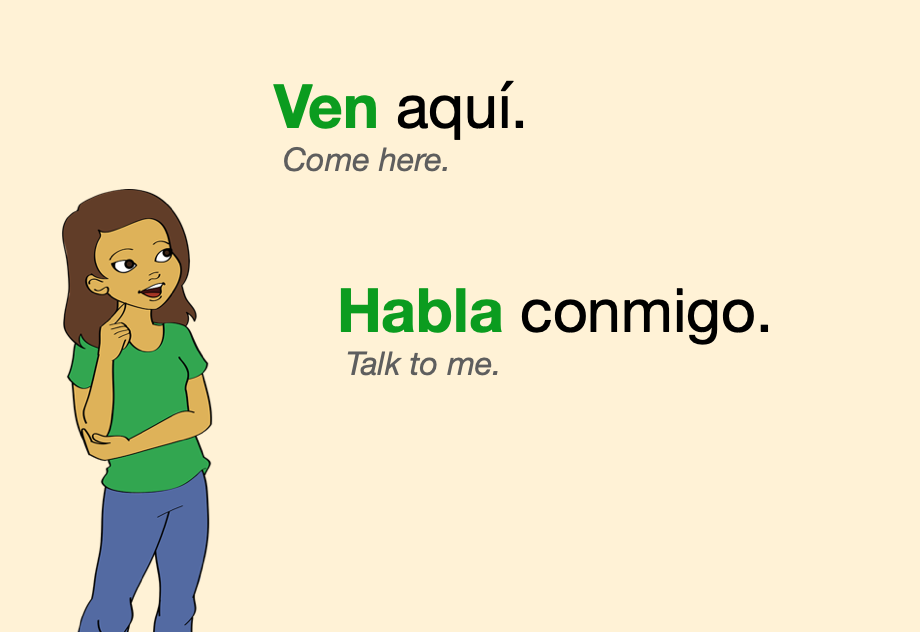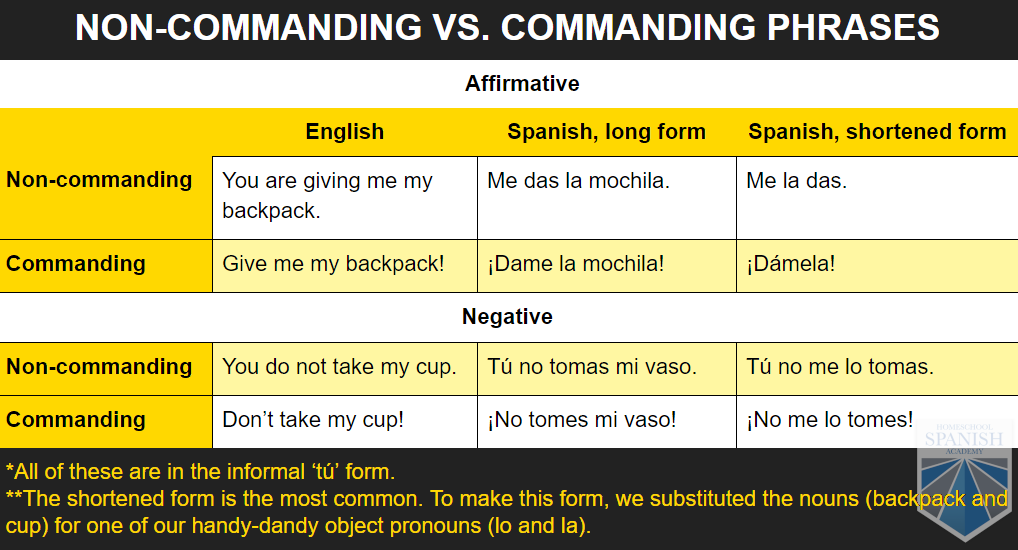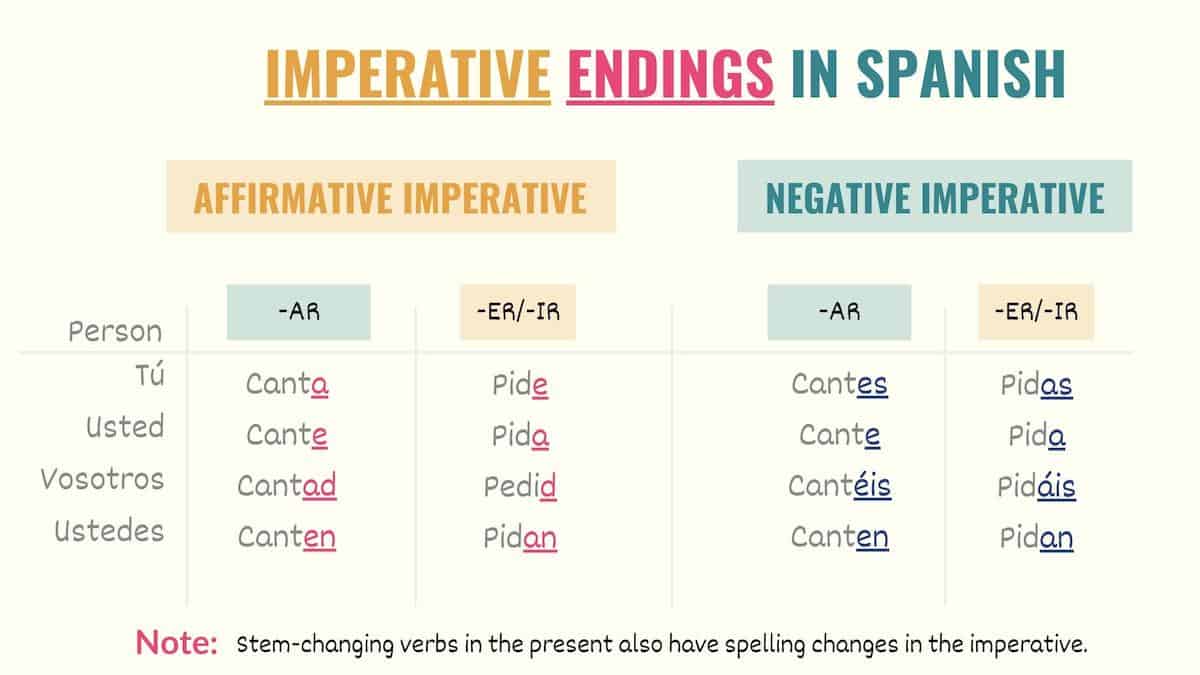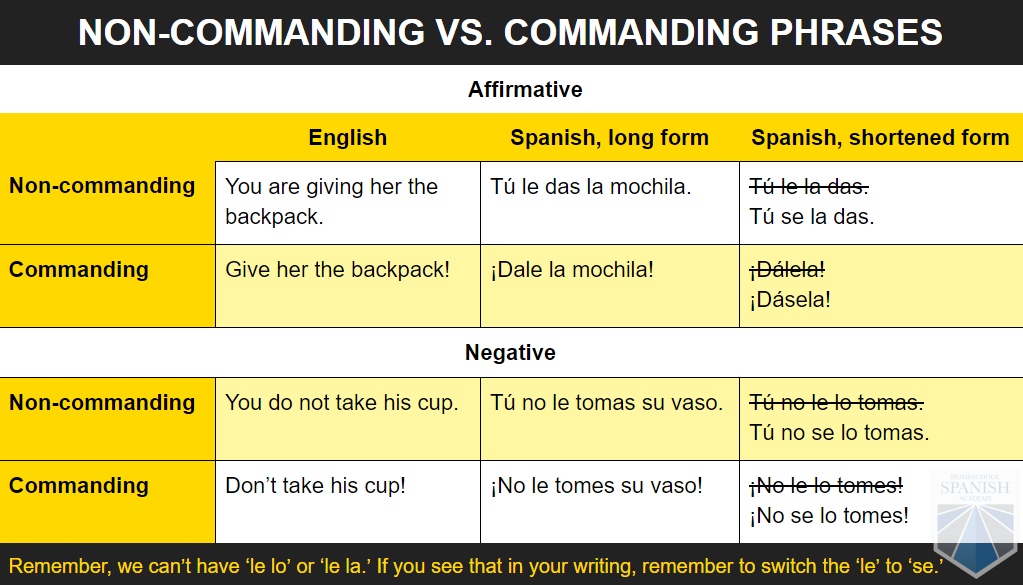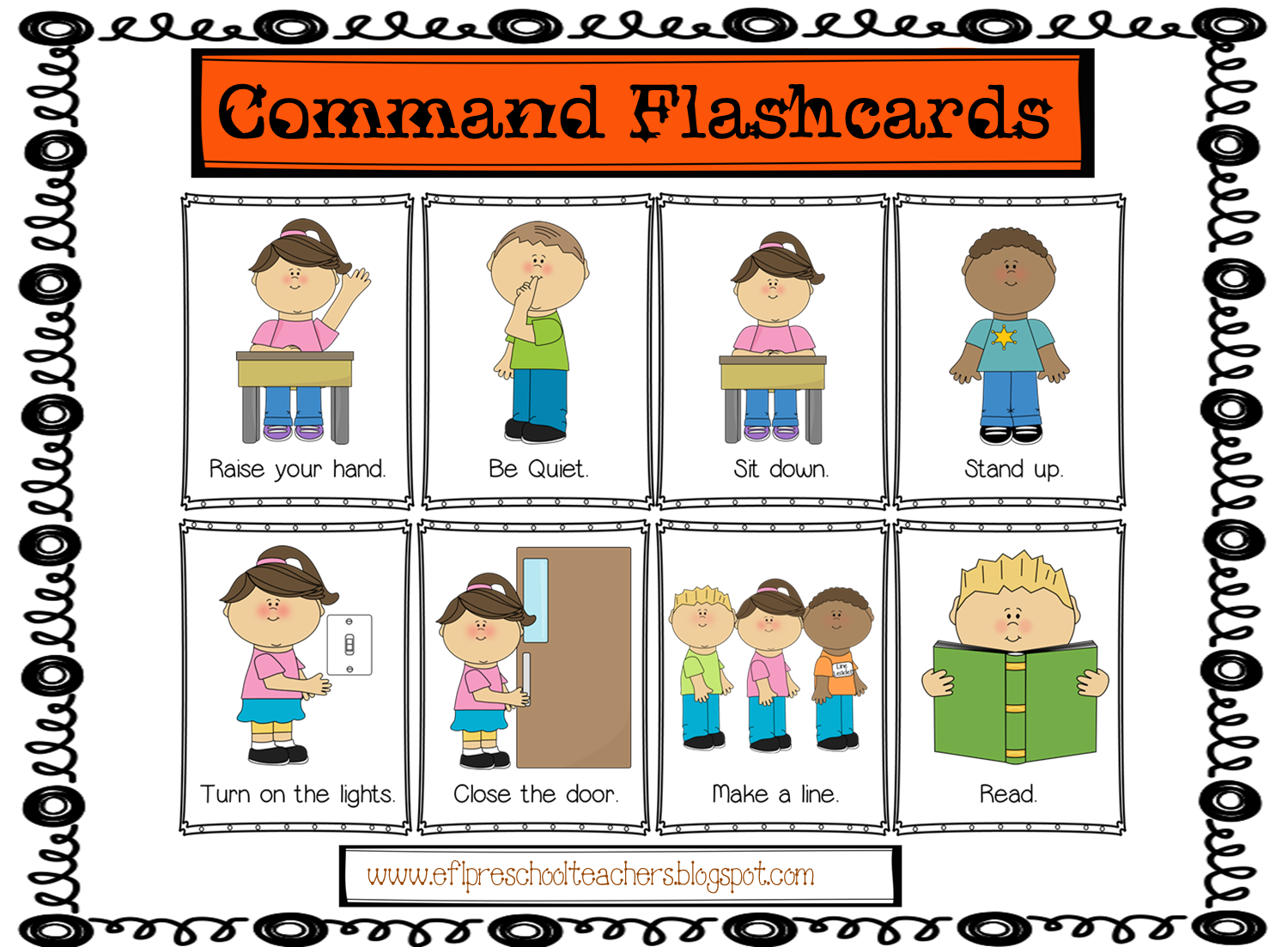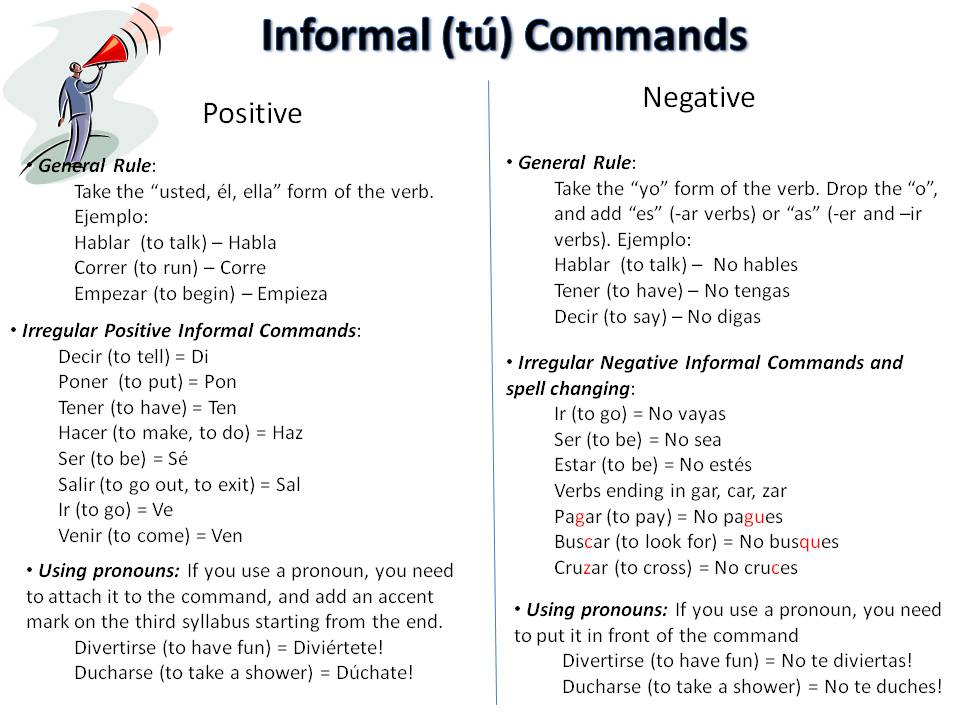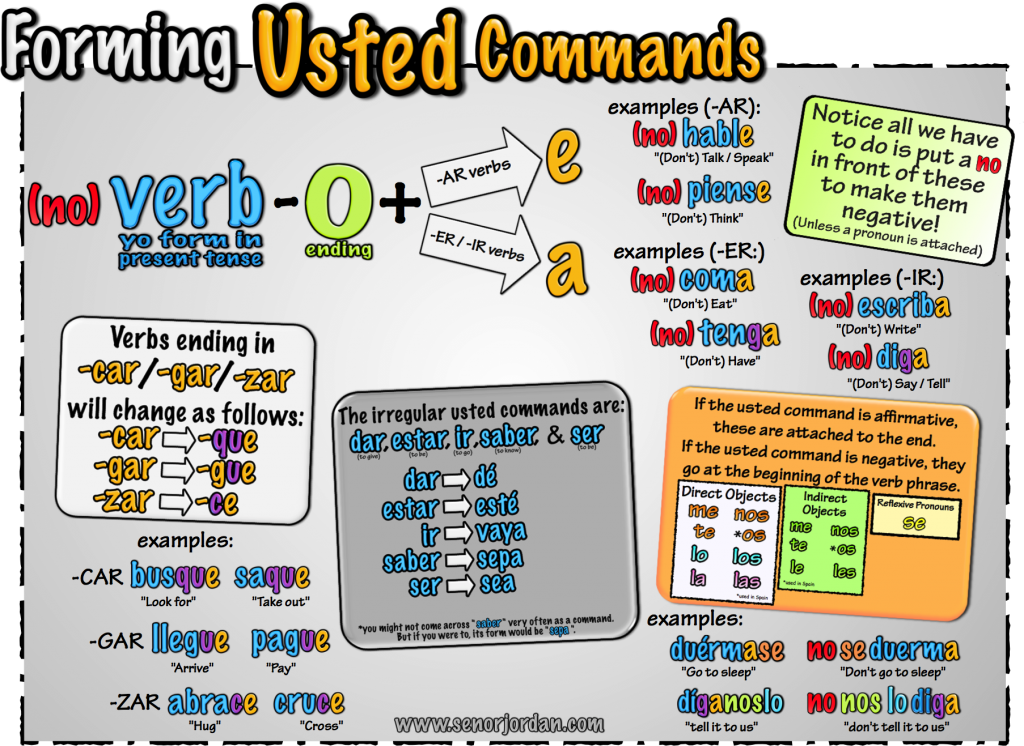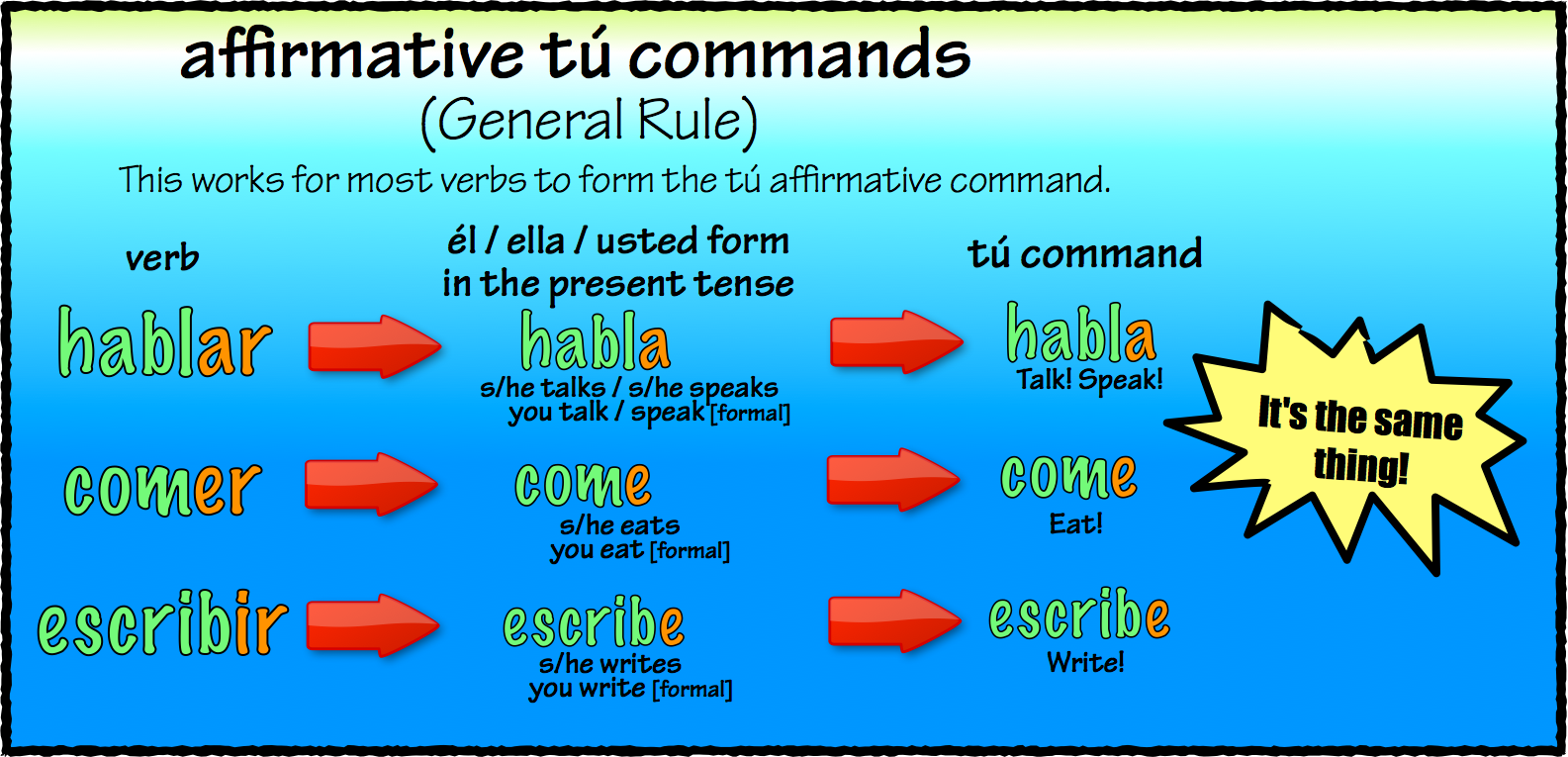Outstanding Tips About How To Write Commands In Spanish

How to form commands in spanish?
How to write commands in spanish. Speakers use nosotros commands to suggest an action be performed by a group of people that they. There are three grammatical moods in spanish: There are many different types of spanish commands ( mandatos ), or imperatives, including affirmative tú commands, negative tú commands, formal commands,.
You’ll learn formal and informal affirmative and negative commands in. Ven a la fiesta conmigo. Use commands (also known as the imperative) to give orders, instructions, to make requests, and to give suggestions or.
The “you” is almost never stated when an english command is given—as in “take out the trash”—but it is common in spanish to use the subject pronoun for “you” ( tú, usted,. To form these, as well as the affirmative and negative formal commands, you should take. Nosotros commands are used by a speaker to suggest an action be performed.
Vosotros no esribís. (don’t watch tv before going to bed.) check out our post here for the. Learning how to use informal commands in spanish is essential to becoming fluent in the language.
Tú commands are the singular form of informal commands. There are many different types of spanish commands, including tú commands, nosotros commands, indirect commands, and formal commands, which we'll cover in this article. When are commands used in spanish?
You can use affirmative tú commands to tell a friend, family member the same age as you or younger,. The imperative ( el imperativo) is one of the three moods in spanish, the other two being the indicative and the subjunctive. How to form negative commands in spanish.
The imperative (imperativo) is used in spanish to give suggestions, commands or orders in a direct way. There are both regular affirmative tú commands, as well as. An affirmative tú command in spanish is a verb in the imperative form telling them to do something.
In this blog post, i’ll explain the types of commands that exist in spanish and how to form them. A command in spanish is used to directly address another person, and give them an order or instruction. Learn what someone means when they say “dime” and more!
(come to the party with me.) no mires la televisión antes de acostarte. The following examples of formal commands use three regular verbs: ~a fun reading where three friends are making suggestions on how to spend their day off together, using nosotros command forms.
The imperative mood is used to tell. When we talk about spanish “commands,” we’re usually referring to the imperative. The imperative is known as a mood (rather than tense) because it is used to.



